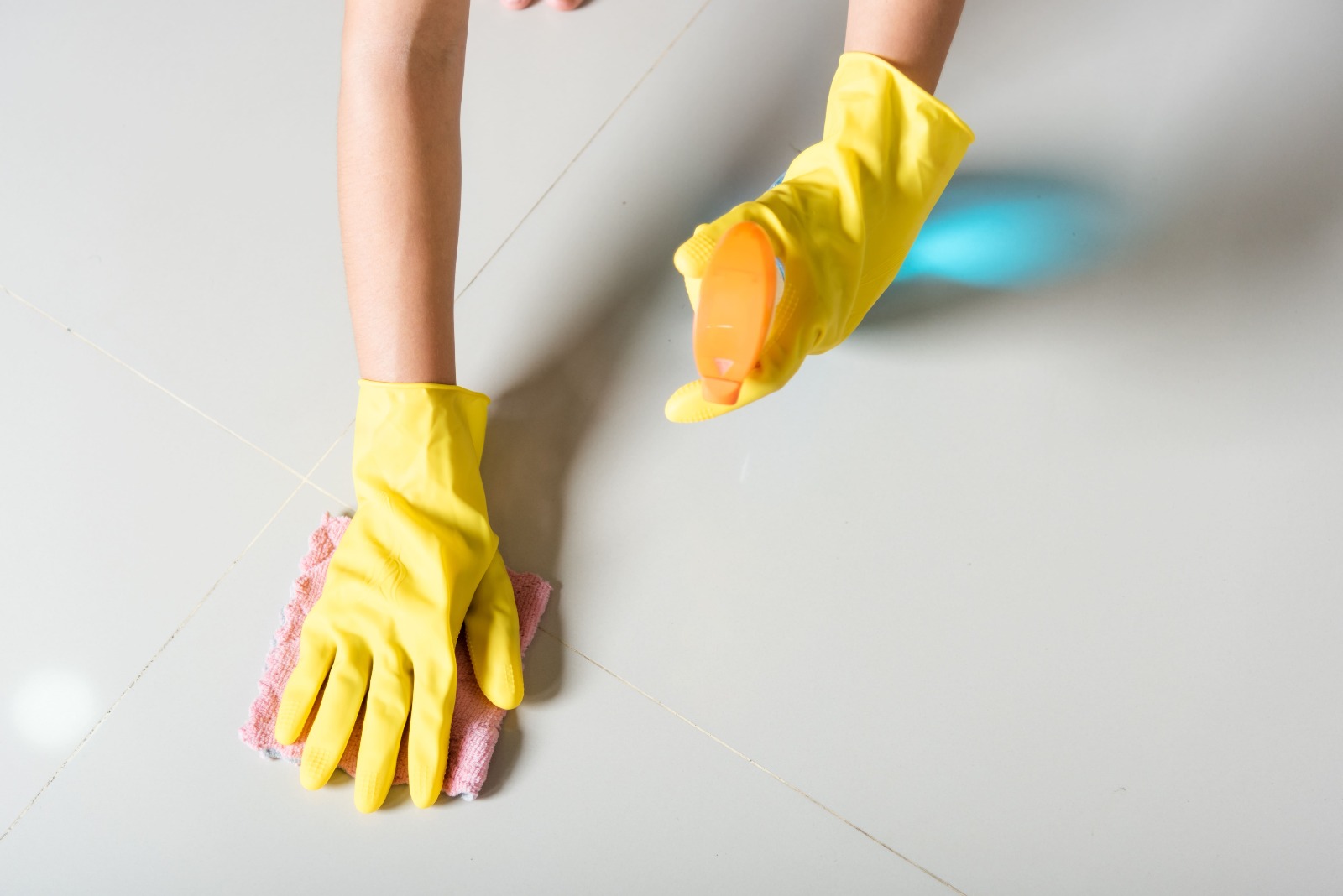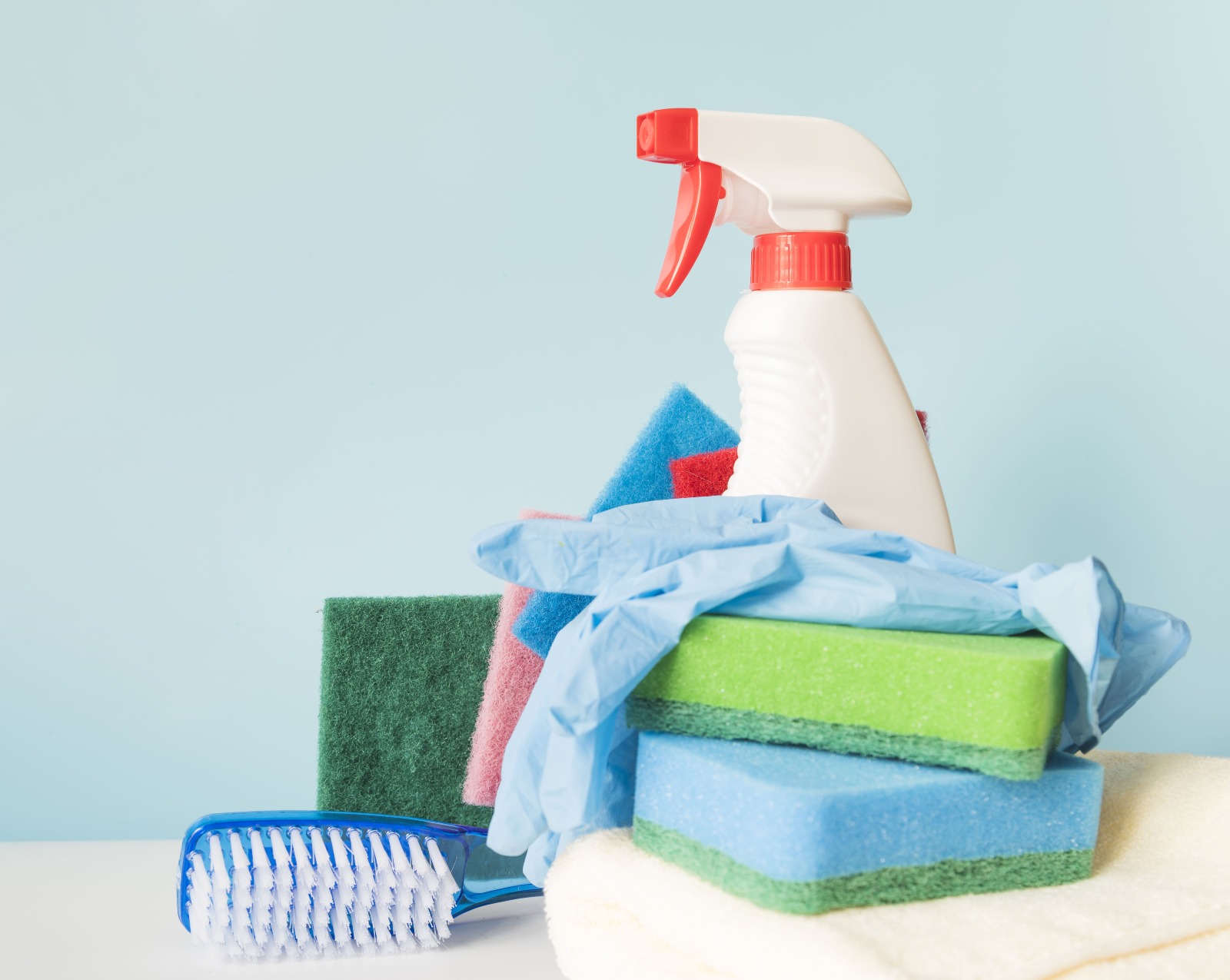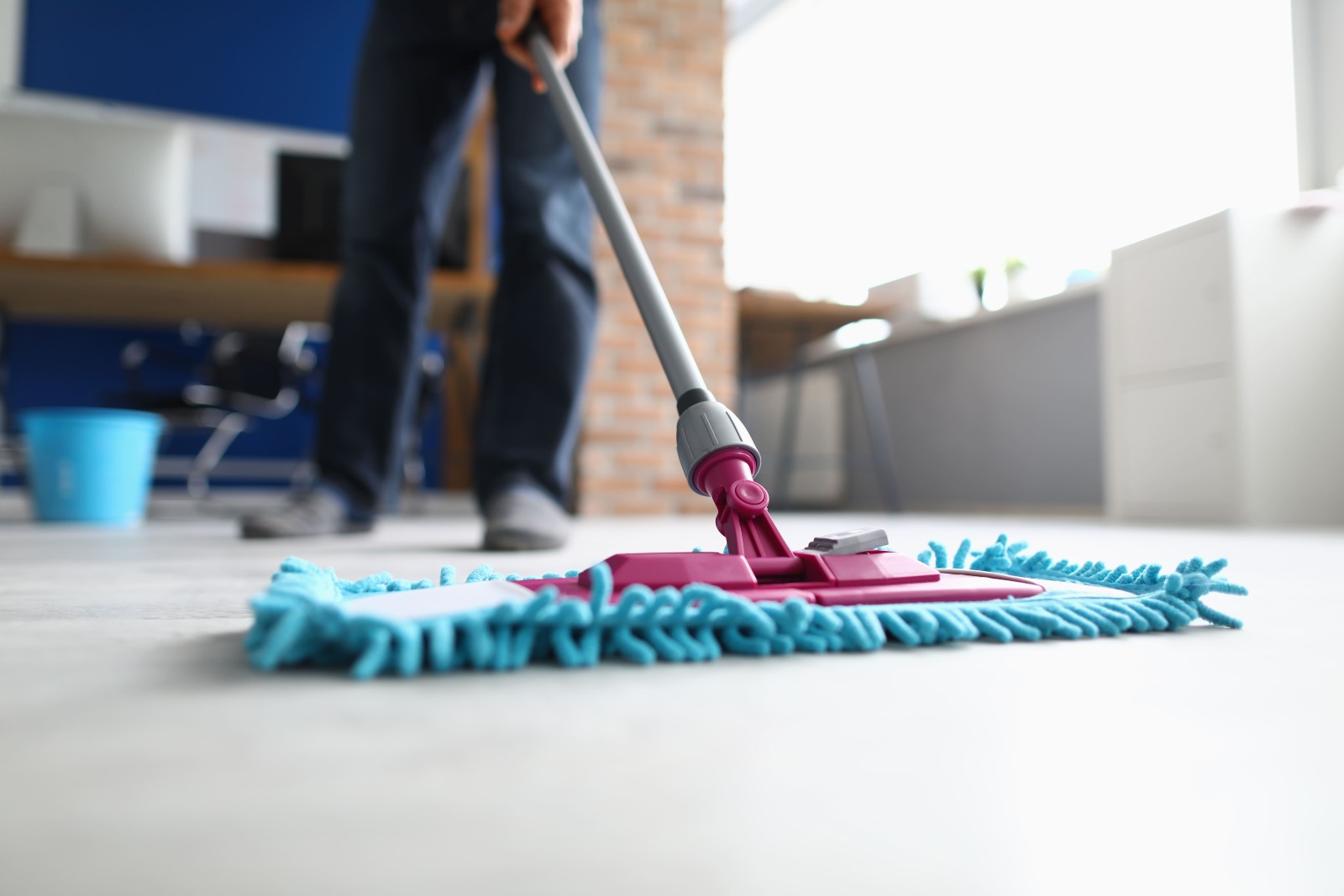Can you use alcohol on porcelain tiles?

That nice, beautiful, white, shiny porcelain that's easy to clean. Who doesn’t like it, right? But wait: it's easy to clean and also very easy to stain. That's why many people wonder if they can apply alcohol on porcelain. Does it damage it?
Its use has become a highly sought-after option in construction for both interior and exterior finishes. Therefore, it's very important to know what to use when cleaning to maintain the shine and high durability, which are characteristic of this flooring.
There are cases where alcohol can be used for household cleaning. On some surfaces, for example, to disinfect and kill disease-causing agents.
But straight to the point: can you apply alcohol on porcelain? Join us as we explore the cleaning recommendations made by the manufacturers themselves.
Is there a recommendation to apply alcohol on porcelain?

If you're wondering whether you can apply alcohol on porcelain, we can already tell you that its use on this type of flooring is not highly recommended by manufacturers.
Thanks to the impermeability of the surface, cleaning porcelain is easy and doesn’t require multiple cleaning products to make it shine. You only need the basics: a broom, neutral detergent, water and a soft cloth.
In some specific situations, such as more intense disinfection, it's fine with heavy dilution. But even then, there are products specifically made for the floor that also disinfect and can be used with confidence.
In these situations, you can apply alcohol on porcelain during the final stage of cleaning: drying. If you need to eliminate viruses and bacteria after a visit, for example, use a cloth dampened with a 1/10 dilution – 100ml of alcohol for each liter of water.
But this should not be a frequent practice. Alcohol can remove the protective layer that provides shine and impermeability to the floor. Additionally, the antiseptic should not be applied directly to the floor, as it can stain immediately, just like it does with wood.
Where to use 70% alcohol for cleaning?
70% alcohol is a powerful antiseptic against viruses, bacteria and fungi. That’s why its use is so important in daily hand cleaning. But what about household cleaning?
In general, the use of 70% alcohol for cleaning is quite limited, as its main function is disinfection. Therefore, it is more recommended for the asepsis of smooth surfaces such as:
Door handles
Sinks
Glass tables
Cabinet handles
Remote controls
Mouse
Keyboards
Office items
Furniture
Even though alcohol can be used in these cases, it is recommended that it be applied to a damp cloth, not directly on the surface.
With the pandemic and the arrival of seasons more susceptible to respiratory diseases, such as winter, maintaining disinfection in places with a higher flow of people, like offices and businesses, is essential to prevent viral infections.
Now that you know when you can apply alcohol on porcelain and how to use it correctly for cleaning items, it’s time to learn the proper care for an effective and safe cleaning of your flooring. Check it out below!
How to clean porcelain correctly?
Porcelain cleaning is done with a soft-bristled broom, mop, water, cloth and neutral detergent. That's all you need to keep the floor clean.
With these items in hand, the first step is to remove dust from the area using a broom or vacuum cleaner. Once that’s done, it’s time to prepare the water and neutral detergent or soap mixture. The recommended measure is one tablespoon of soap for every five liters of water.
Next, dip the clean cloth into the water and soap solution and begin cleaning the entire porcelain surface. Since this type of detergent effectively removes grease, it’s perfect for removing everyday marks from all rooms.
For the kitchen or areas that accumulate more grease, it’s recommended to pour water and soap and scrub for a more efficient clean.

The next step is to remove the excess water and rinse if necessary. To finish, use a clean, dry cloth.
All the recommendations above are valid for daily cleaning to remove marks and dust. But we know that many people want to leave the floor shiny and smelling fresh. In these cases, they can use disinfectants and scented cleaners with their favorite fragrances.
There is also the option of buying products specifically designed for this type of flooring. This way, it's possible to make everything shine quickly, easily and without the uncertainty of whether or not to use alcohol on porcelain.
Follow the manufacturers' recommendations
Did you not check if you can use alcohol on porcelain or other products and ended up with a stained floor? This is a very common situation. That's why some specialists have provided manuals so users can clean correctly without damaging the surface.
Below are the types of dirt and the recommended cleaning products:
Fruit juices, wine, coffee, beer and soda: clean with bleach;
Grease or oil: clean with creamy scouring powder, alkaline detergent or multipurpose cleaner;
Paint: use multipurpose cleaners with a sponge, acidic detergent or organic solvent;
Rust: use a specific Rust Remover for floors;
Lime and cement residues: clean with acidic detergent;
Pencil marks: use creamy scouring powder or neutral detergent;
Crayon: use creamy scouring powder or powdered detergent;
Tire rubber: clean with alkaline detergent or multipurpose cleaner.
It is important to note that all these recommendations regarding product dilution should follow the instructions of each porcelain manufacturer. Always remember to read the labels to know about prohibited mixtures and the correct amount for cleaning.
These tips may vary depending on the type of porcelain you have chosen. Therefore, make sure to check the recommendations from the manufacturer of your flooring.
Usually, this information from the manufacturer is on the product's packaging, but if you're unsure about the origin of your floor, these manuals can also help you identify the type of flooring used in your home.
Now that you've understood whether you can use alcohol on porcelain, let's talk about other places where it shouldn't be used:
Where not to use alcohol under any circumstances
Now that we know where and how to use 70% alcohol for cleaning porcelain and other items, it's time to talk more about places where the product should never be used.
The recommendation against using alcohol in these areas is due to the risk of damage and stains when the substance comes into contact with the surface. Therefore, avoid using alcohol on places and objects such as:
Varnished wood;
Waxed, varnished, painted and lacquered furniture;
Directly on the screen of electronic devices;
Rubber, plastic and acrylic surfaces.
And how to clean these objects and surfaces without damaging them? The best option is to use a dusting cloth and a cloth slightly dampened with detergent.
For electronic device screens, the most recommended is using isopropyl alcohol, which removes grease, fingerprints and general dirt. But be careful: never spray the product directly on the screen; the recommendation is to use paper towels or a soft cloth, making gentle movements to properly clean these surfaces.
Well, as you can see, cleaning is our specialty! It's no wonder we have countless product lines tailored to every need, both for personal and professional use. Be sure to check them out!

 Português (Brasil)
Português (Brasil)
 English (US)
English (US)
 Español
Español



